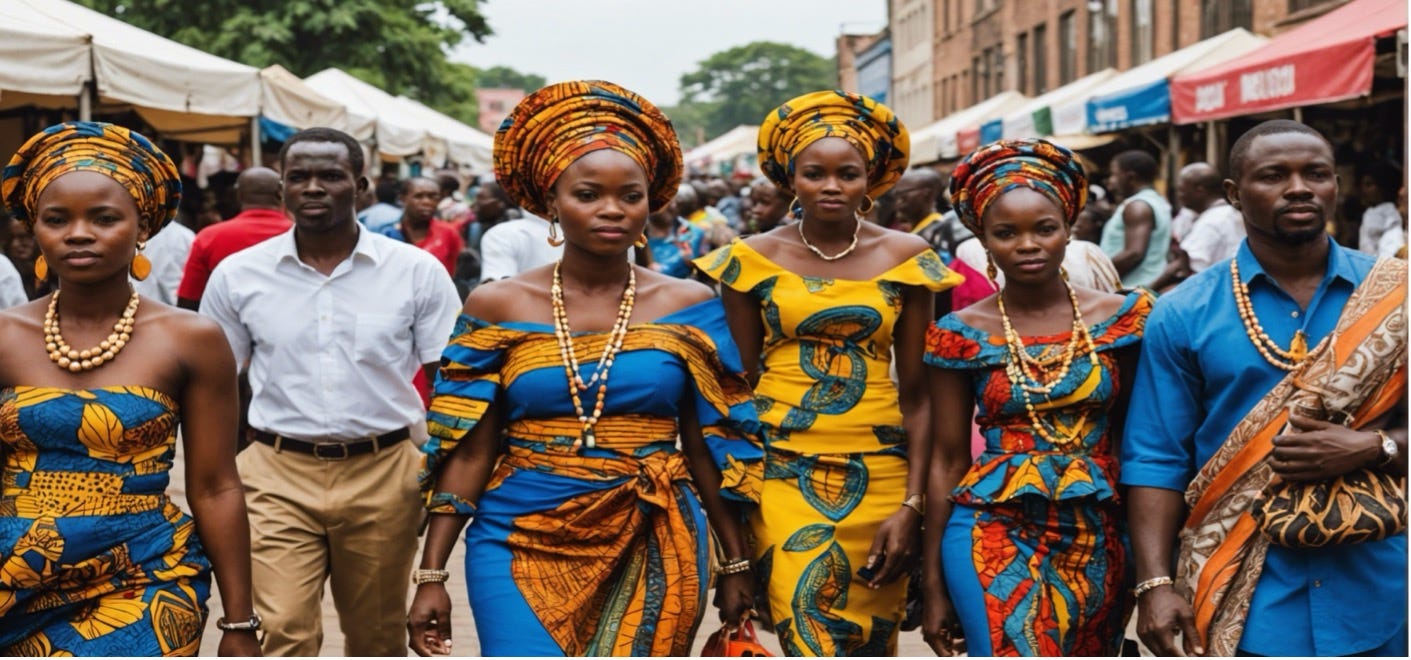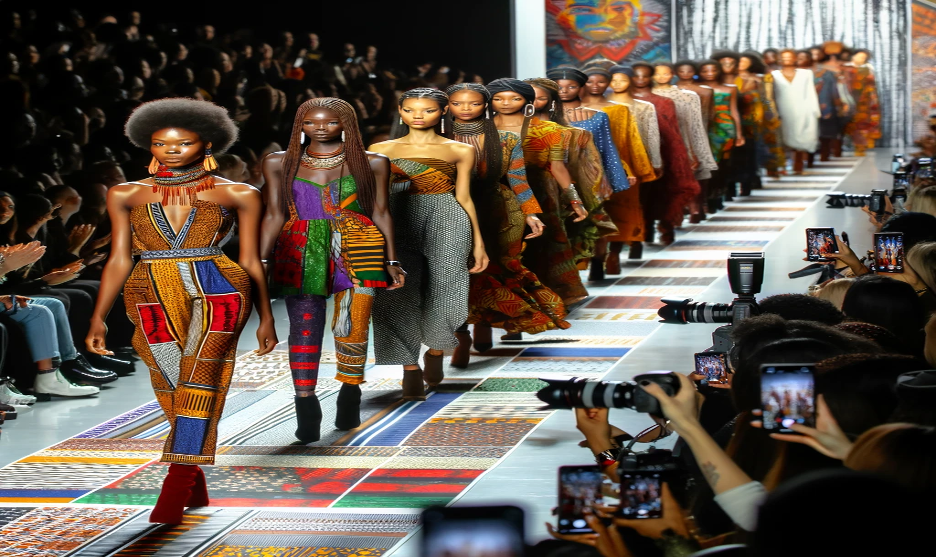African Fashion Boosts Economies Across Africa
Introduction:
African fashion is more than just looking good—it's a major driving force behind economic growth in many African countries. From the markets of Cairo to the designers of Cape Town, the fashion scenes of Dakar to Nairobi, this industry celebrates the fantastic diversity of African cultures. It contributes considerably to the total value of goods and services produced in these nations, known as the Gross Domestic Product (GDP). The African fashion industry was estimated to be worth approximately $31 billion in 2020. This valuation reflects the continent's rich cultural heritage and growing influence in the global fashion scene. In 2024, the revenue in Africa's apparel market is projected to reach $70.58 billion, with an expected annual growth rate of 4.67% from 2024 to 2029. This significant growth underscores the increasing demand for African fashion, driven by a youthful population and a burgeoning middle class. Despite its potential, Africa's fashion industry currently accounts for about 1.2% of the global market, valued at approximately $2.5 trillion. This indicates substantial room for growth and expansion within the continent's fashion sector. The rise of e-commerce and digital platforms has further propelled the African fashion industry, enabling designers to reach global audiences and allowing consumers to access diverse products. This digital transformation will continue driving the industry's growth in the coming years. In summary, the African fashion industry has experienced significant growth, with its market value increasing from $31 billion in 2020 to $70.58 billion in 2024. This trajectory highlights the continent's potential to become a significant player in the global fashion landscape.
Textile and Clothing Jobs Drive Africa's Industrial Growth:
For a long time, the African Development Bank Group (AfDB) has recognized the vast potential of the textile and clothing industry to industrialize African economies. This labor-intensive sector can create millions of jobs, especially for women and youth. Having many jobs in textiles and clothing is critical for sustainable economic development across Africa. The value of cotton and other materials used to make clothes increases tremendously when the finished products reach stores—up to 600% more! This shows the massive economic benefits the fashion industry can generate.
Fashion Designs Generate Billions for South Africa:
In South Africa, the high-end fashion design industry contributes over 1 billion rand to the country's GDP (total value of goods/services) every year. That's an incredible achievement! It shows how this sector can produce huge revenues, create many jobs, and provide training opportunities. This income and employment from fashion will be significant as South Africa's economy recovers after the COVID-19 pandemic.
African Fashion Empowers Local Communities:
The African fashion industry does more than generate income—it empowers and uplifts local communities. Countries can increase productivity and economic self-reliance at the community level by investing in teaching skills like design, sewing, and textile-making. This incredibly impacts women, who comprise most of the fashion workforce. The United Nations highlights the importance of preserving traditional cultural designs and values through fashion to provide broader societal benefits beyond economics. Nurturing African fashion uplifts heritages while strengthening communities financially.
Challenges and Opportunities:
However, the path to realizing African fashion's full economic potential has challenges. These include getting enough funding, competing with cheap clothing imports, and needing better roads and factories. But there's also an opportunity: More and more people globally want "slow fashion" - clothes made responsibly from natural materials like cotton and recycled fabrics. This growing demand allows African designers to create a unique niche for their cultural, sustainable styles in the worldwide fashion market.
African Styles Going Global:
There is growing interest around the world in African textiles and clothing designs. Major international fashion brands are using more and more African patterns and influences in their clothing lines. This worldwide attention shines a spotlight on African fashion talents. It allows African designers to break into new global markets and sell their styles internationally on platforms like Pashione. African fashion is taking center stage for audiences everywhere.
African Fashion Set for Big Growth:
In conclusion, with its bright colors, one-of-a-kind styles, and deep cultural meaning, the African fashion industry is ready to explode in growth. Governments and development organizations see the vast potential of this sector and are investing more money and resources into it. Without a doubt, as African fashion expands, it will have an even more significant impact, boosting the total economies and incomes across the continent.
Did you learn something?
Join me next time as I continue sharing insightful articles on African fashion. Also, be sure to subscribe so you don't miss out!



